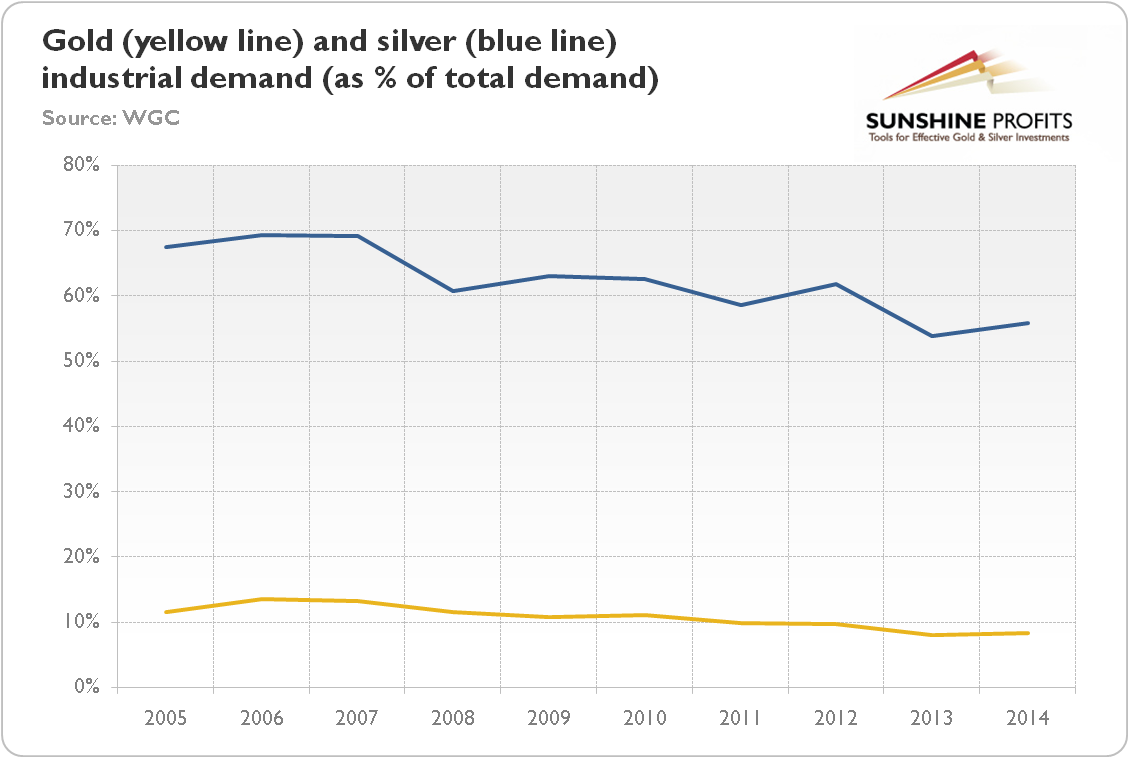We have already analyzed the impact of the U.S. dollar or interest rates on the gold prices, however we have never fully examined all factors that drive its price.
Indeed, no other asset divides opinions so sharply. Have you ever seen people passionately discussing the nature of copper or the Australian dollar? Probably not, while gold kindles really extreme opinions. There are true gold bugs, who regard the yellow metal as the ultimate money and the only store of value, and gold skeptics, like Warrant Buffer, who consider the yellow metal as a “barbarous relic” without any inherent value. The list of conflicting opinions goes on: gold is simultaneously an inflation hedge, safe-haven against financial crises, luxury-consumption good, reserve currency, shiny commodity with no yield, financial asset and an instrument of diversification.
To make matter worse, neither the financial press, nor academics have reached agreement on gold’s nature and the drivers of its price. For example, Sipkova et al. (2014) argue that the money supply and systemic risk drives the gold price the most, while Capie et al. (2005) find that gold serves as a hedge against volatility in the foreign exchange value of the dollar. According to Sherman (1983), the gold price has a significant positive relationship with unexpected inflation, while Adrangi et al. (2003) claim that there is only a relationship with expected inflation, but not with unexpected inflation. Others (e.g., Cecchetti et al., 2000) deny any link between gold price and inflation. The academic literature is quite large and diverse, and it covers the impact of almost all possible macroeconomic factors that affect the price of gold, such as economic growth, interest rates, public debt, central banks’ foreign reserves or oil prices.
We will analyze these factors in a systematic way in the following articles and editions of the gold Market Overview, but this time we will focus on the diverse opinions on gold and try to understand why they are so divided.
The reason is simple: gold is probably the most difficult asset class to understand. Not because the law of supply and demand does not apply to it, but because several complementary and very diverse sources of the demand and the supply of gold make analysis so complex. Compare it with base metals to see why the gold market is so challenging. Copper’s supply-demand balance is much easier to understand, since there is a specific purpose for the base metals in the industry. If you know the expected mining output of copper, the level of inventories and the estimated demand from the industry, you can solve the equation. But gold use is much less common in industry comparing not only to base metals but also to silver (see: chart 1) and holdings of this precious metal play a larger part in its price than consumption. In other words, the gold is valued more from a currency standpoint.
Chart 1: Gold (yellow line) and silver (blue line) industrial demand as a percentage of total demand from 2005 to 2014

However, unlike national currencies, the yellow metal is not tied to any particular country. Gold is a global monetary asset and its price reflects global sentiment, not simply the national or sector sentiment, and that's why it is so complex and difficult to analyze.
Gold prices are very difficult to predict – demand for gold is driven by various motives that are sensitive to macroeconomic conditions in different parts of the world, and the world as a whole. The situation is further complicated because gold has no yield, so the standard discounted cash flow models cannot be used in relation to gold. Instead, investors can only apply the relative valuation. Thus, gold has value as an alternative to financial assets tied to fiat currencies – this is why we have such varied forecasts for future gold prices. Those who believe in the inevitable and prompt collapse of the U.S. dollar or the contemporary monetary system prophesize that gold prices will skyrocket to $10,000, while other analysts are very optimistic about the condition of the global economy, and forecast the fall in the gold prices to $800 or even less.
In sum, the gold market is one of the most complicated markets in the world. The yellow metal combines the features of commodity and currency and has several sources of supply and demand – of a global nature – which makes gold market analysis very demanding, but also very fascinating.
Would you like to understand this complex market? We focus on the fundamental analysis in our monthly Market Overview reports; however we provide also Gold & Silver Trading Alerts for traders interested more in the short-term prospects. Join our gold newsletter. It’s free and you can unsubscribe in just a few clicks.
Arkadiusz Sieron
Sunshine Profits‘ Gold News Monitor and Market Overview Editor
Gold News Monitor
Gold Trading Alerts
Gold Market Overview


